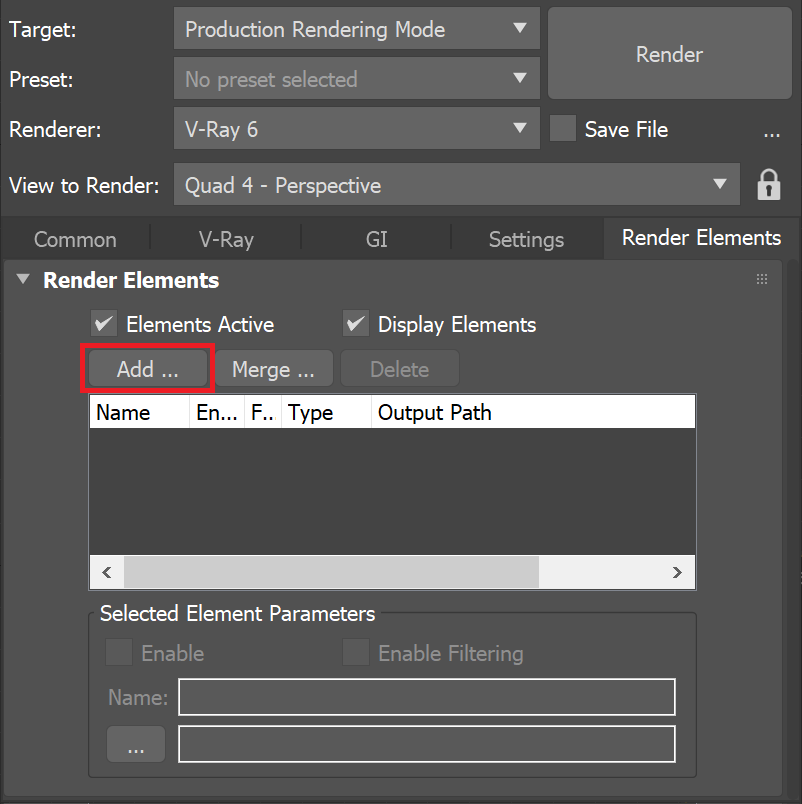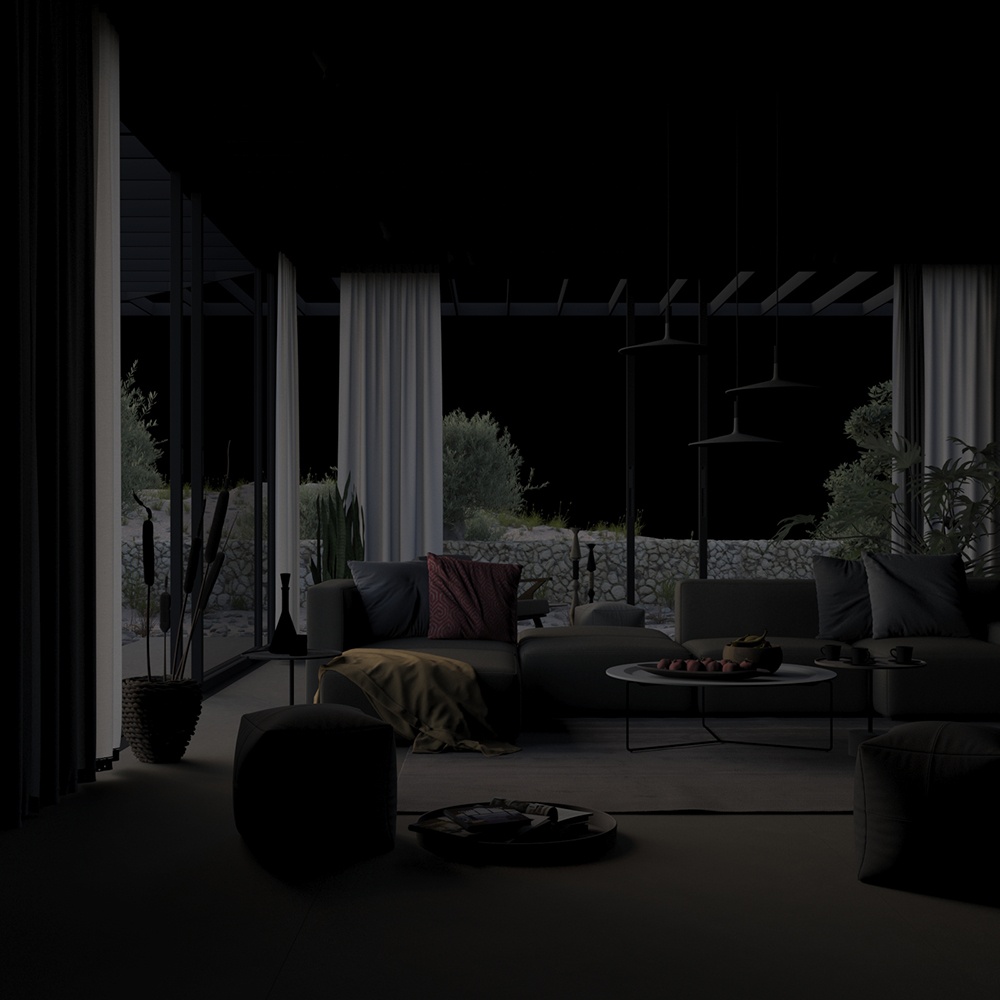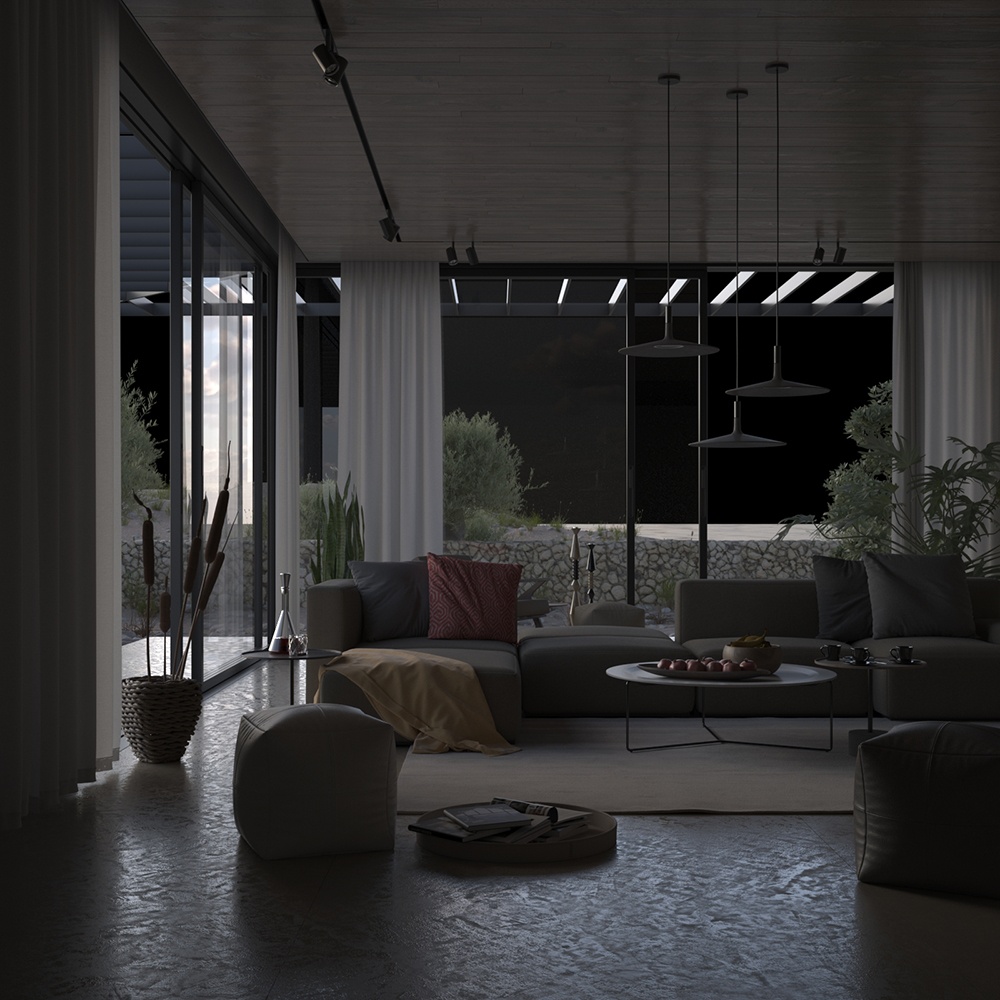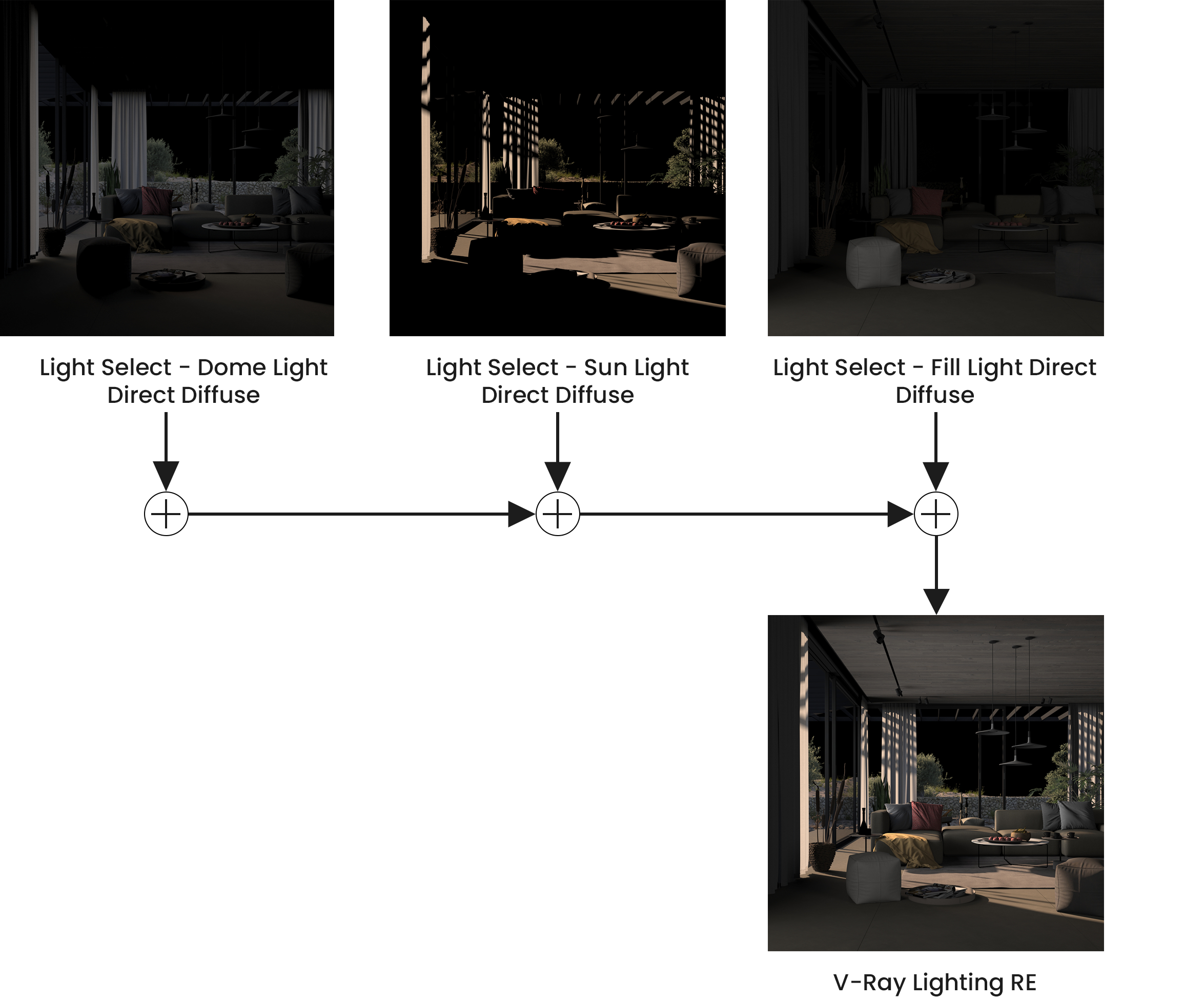Page History
This page gives information on the Light Select Render Element.
Overview
...
| Section | |||||||||||||||||||||
|---|---|---|---|---|---|---|---|---|---|---|---|---|---|---|---|---|---|---|---|---|---|
|
...
Parameters
...
| Section | |||||||||||||||||||||||||||
|---|---|---|---|---|---|---|---|---|---|---|---|---|---|---|---|---|---|---|---|---|---|---|---|---|---|---|---|
|
...
Common Use: Changing Lighting in Composite
...
...
For this example, the Dome Light is assigned two VRayLightSelect render elements: The first element's Mode is set to Direct diffuse, and the second element's Mode is set to Direct specular. This gives a finer degree of control to allow separate tuning of the light's diffuse and specular contributions. In addition, the light is rendered with a third VRayLightSelect element with the Mode set to Full.
| Section | |||||||||||||||||||||||||||||||||
|---|---|---|---|---|---|---|---|---|---|---|---|---|---|---|---|---|---|---|---|---|---|---|---|---|---|---|---|---|---|---|---|---|---|
|
...
Example: Compositing
VRayLightSelect is useful for editing the lights in a scene using a compositing or editing program. See the Beauty element before and after compositing.
...
The following diagram shows the compositing formula to recreate all the scene's Lighting from light sources when each light in the scene is accounted for in exactly one VRayLightSelect render element in Direct diffuse mode.
| Section | |||||||||||||||||
|---|---|---|---|---|---|---|---|---|---|---|---|---|---|---|---|---|---|
|
...
The diagram above illustrates that the sum of all VRayLightSelect Render Element set to Direct diffuse mode represents the VRayLighting render element which can be used in the Back to Beauty composite. For the above equation to work correctly, all enabled lights need to be accounted exactly once in the VRayLightSelect render elements. This happens with either specifying each light in a separate element, or combining them in a practical manner in several elements and avoiding repetitions.
...
When the VRayLightSelect render element is set to Indirect mode, its output equals the sum of VRayLightSelect render element set to Indirect diffuse mode and VRayLightSelect set to Indirect specular mode.
Notes
...
| Fancy Bullets | ||
|---|---|---|
| ||
|







